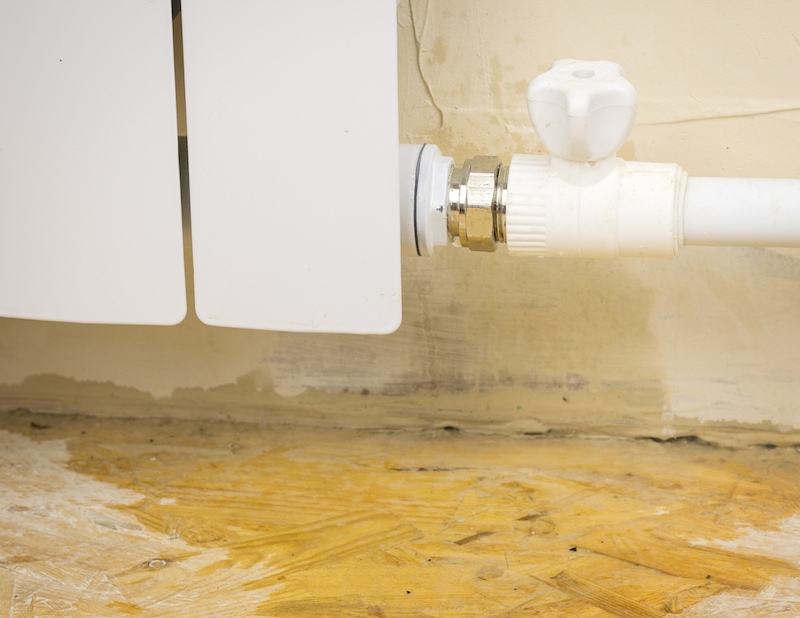They are making several great annotation on the subject of How to Find Water Leaks in general in this great article which follows.

Leaks not only create waste of water yet can also trigger unneeded damages to your residence and also promote unwanted organic growth. By understanding as well as looking for day-to-day scenarios that create leakages, you can shield your residence from future leakages as well as unnecessary damage.
Intruding roots
Most water leaks start outside the house rather than inside it. You may see damp spots or sinkholes in your backyard, and that may suggest that tree origins are invading water lines creating water to seep out.
Corroded water supply
This could be the reason of discoloration or bending on your water pipes. If our plumbing system is old, consider replacing the pipelines since they are at a greater risk of rust than the newer designs.
Defective Pipeline Joints
The factor at which your pipes attach is frequently the weakest web link in the waterline. Pipeline joints can deteriorate gradually, causing water leaks. Sadly, the majority of pipeline joints are not easily visible. If you have noisy pipes that make ticking or banging sounds, especially when the hot water is switched on, your pipe joints are probably under a lot of pressure. It is a good idea to have your plumber evaluate your system yearly.
Instantaneous temperature modifications.
Severe temperature modifications in our pipes can create them to expand and also acquire suddenly. This growth as well as contraction might trigger cracks in the pipelines, particularly if the temperature level are below cold.
Poor Water Connectors
At times, a leakage can be triggered by loose pipes and pipelines that provide your appliances. In instance of a water links leakage, you may observe water running directly from the supply line or puddles around your home appliances.
Blocked Drains
Clogged drains could be irritating and inconveniencing, but they can often wind up causing an overflow bring about rupture pipes. Keep removing any kind of materials that may go down your drains pipes that can clog them to prevent such inconveniences.
All the above are reasons for leakages however not all water leaks result from plumbing leaks; some leakages could originate from roofing leakages. All leaks should be repaired instantly to avoid water damages.
Leakages not only create waste of water yet can likewise create unneeded damages to your house as well as advertise undesirable natural growth. By looking as well as recognizing for day-to-day scenarios that cause leaks, you can secure your house from future leakages as well as unneeded damage. Today, we will look at 6 leakage causes that might be triggering your pipelines to leak.
At times, a leakage can be caused by loose tubes and pipes that supply your devices. In case of a water connections leak, you may discover water running directly from the supply line or pools around your home appliances.
How To Check For Water Leak In Your Home
How To Check for Leaks
The average household's leaks can account for nearly 10,000 gallons of water wasted every year and ten percent of homes have leaks that waste 90 gallons or more per day. Common types of leaks found in the home are worn toilet flappers, dripping faucets, and other leaking valves. These types of leaks are often easy to fix, requiring only a few tools and hardware that can pay for themselves in water savings. Fixing easily corrected household water leaks can save homeowners about 10 percent on their water bills.
To check for leaks in your home, you first need to determine whether you're wasting water and then identify the source of the leak. Here are some tips for finding leaks:
Take a look at your water usage during a colder month, such as January or February. If a family of four exceeds 12,000 gallons per month, there are serious leaks.
Check your water meter before and after a two-hour period when no water is being used. If the meter changes at all, you probably have a leak.
Identify toilet leaks by placing a drop of food coloring in the toilet tank. If any color shows up in the bowl after 10 minutes, you have a leak. (Be sure to flush immediately after the experiment to avoid staining the tank.)
Examine faucet gaskets and pipe fittings for any water on the outside of the pipe to check for surface leaks.
Undetected water leaks can happen without the home or business owner even realizing. If you suspect a water leak, but not able to find the source. It is time to contact a professional water leak detection service, The Leak Doctor.
How To Find a Water Leak In Your Home
https://www.leakdoctor.com/blog/How-To-Check-For-Water-Leak-In-Your-Home_AE197.html

I was made aware of that report about Common Water Leaks In House through a friend on a different website. Remember to take the opportunity to share this page if you liked it. I am grateful for your time. Don't forget to pay a visit to our website back soon.
We're ready, are you?